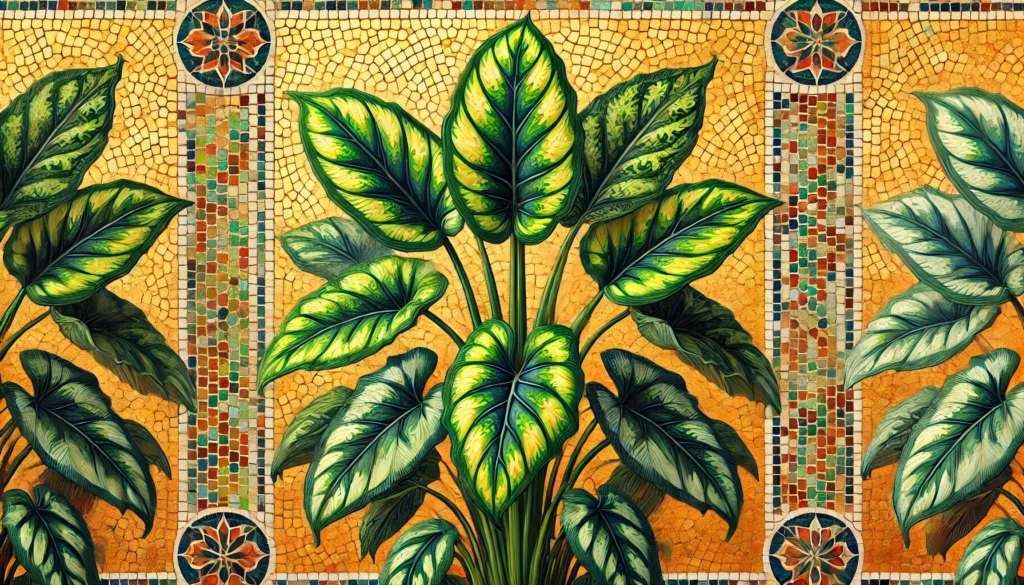Home » Cat Plants » Florida Beauty Plant Dangers: How It Can Harm Your Cat?

The Florida Beauty plant, also known as the Gold Dust Dracaena or Spotted Dracaena, is a popular houseplant that can be toxic to cats. While cats are not necessarily allergic to this plant, ingesting it can lead to serious health issues.
The Florida Beauty contains saponins which are poisonous compounds that can cause a range of symptoms in felines. This plant is commonly found as an indoor ornamental in homes and offices.
Ingestion may cause mild gastrointestinal upset, but is generally not life-threatening.
Ingestion can result in mild symptoms like vomiting, diarrhea, or drooling. Rarely fatal but may require veterinary care.
Eating these plants can lead to more pronounced symptoms like abdominal pain, lethargy, or difficulty breathing. Veterinary intervention may be necessary.
Ingesting even small amounts can cause severe symptoms like organ damage, seizures, or cardiac failure without rapid treatment.
All parts of these plants are extremely poisonous to cats and can quickly lead to death, even with immediate veterinary care.
** Please note: Please note that toxicity level can vary based on the amount ingested and the specific cat. It's always best to keep these plants completely inaccessible to cats and seek immediate veterinary care or call the poison hotline if you suspect your cat has ingested any part of a toxic plant.
If your cat has ingested parts of a Florida Beauty plant, they may exhibit several concerning symptoms. Common signs of Florida Beauty poisoning in cats include:
If you notice any of these symptoms, it’s crucial to contact your veterinarian immediately.
When you bring your cat to the vet with suspected Florida Beauty poisoning, here’s what you can expect:

A: Yes, cats can be allergic to Florida Beauty. Symptoms of an allergic reaction may include itching, sneezing, and skin irritation.
A: Yes, Florida Beauty, also known as Dracaena surculosa or Gold Dust Dracaena, is toxic to cats. Ingesting any part of this plant can cause symptoms such as vomiting, diarrhea, and drooling.
A: Symptoms of Florida Beauty poisoning in cats include vomiting, diarrhea, excessive drooling, loss of appetite, and lethargy. Immediate veterinary care is recommended if ingestion is suspected.
A: To prevent contact, ensure that Florida Beauty is not present in your home or garden. Keep your cat indoors or monitor outdoor activities closely to avoid exposure.
A: If your cat ingests Florida Beauty, contact your veterinarian immediately. Do not induce vomiting unless instructed by a veterinary professional. Immediate medical attention is necessary.
A: Yes, Florida Beauty is commonly found in homes and gardens as an ornamental plant. It is important to ensure this plant is kept out of reach of cats to prevent accidental ingestion.
The Florida Beauty is a cultivar of Dracaena surculosa, native to tropical regions of West Africa. It gained popularity as a houseplant in the 1970s due to its attractive, spotted leaves and tolerance for low-light conditions. The plant was awarded the Royal Horticultural Society’s Award of Garden Merit in 1993.
Despite its beauty, the Florida Beauty has always posed a risk to pets due to its toxic saponins. As awareness of plant toxicity grew, it became important for pet owners to research the safety of their houseplants. Today, the Florida Beauty remains a beloved ornamental, but it is crucial to keep it out of reach of curious cats and dogs.
Please note: The information shared in this post is for informational purposes only and should not be considered as veterinary medical advice.